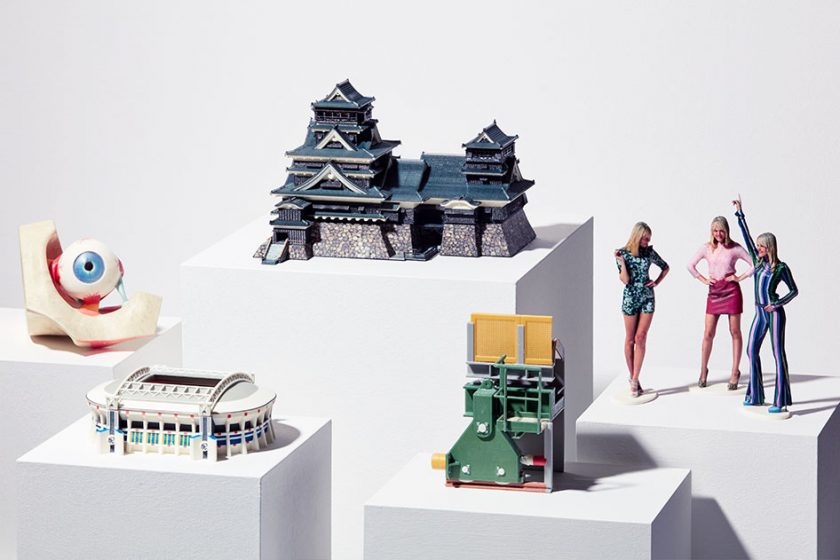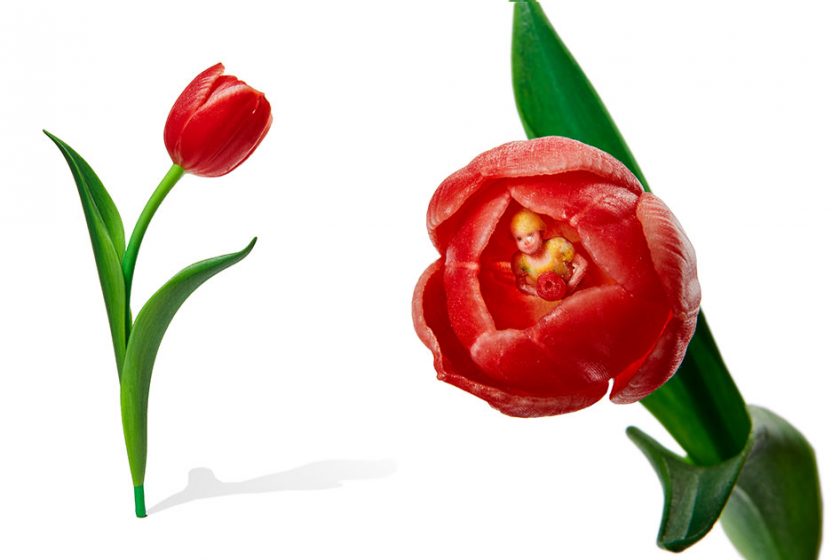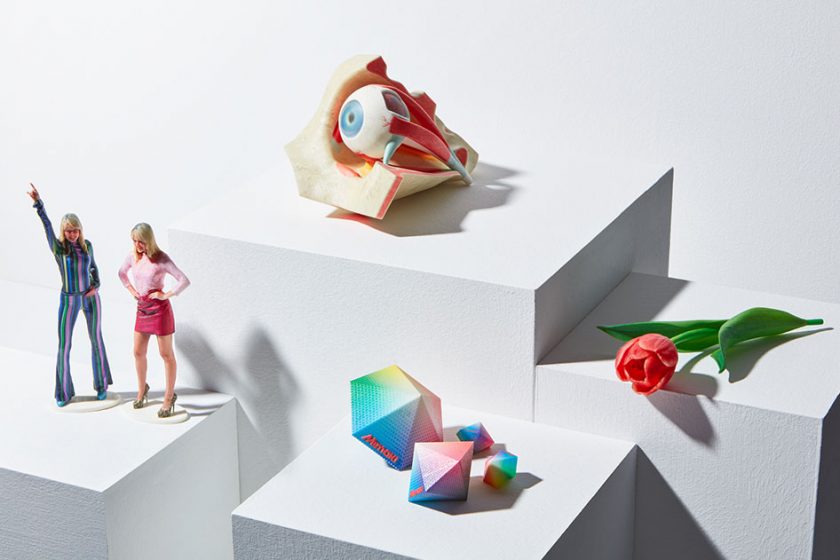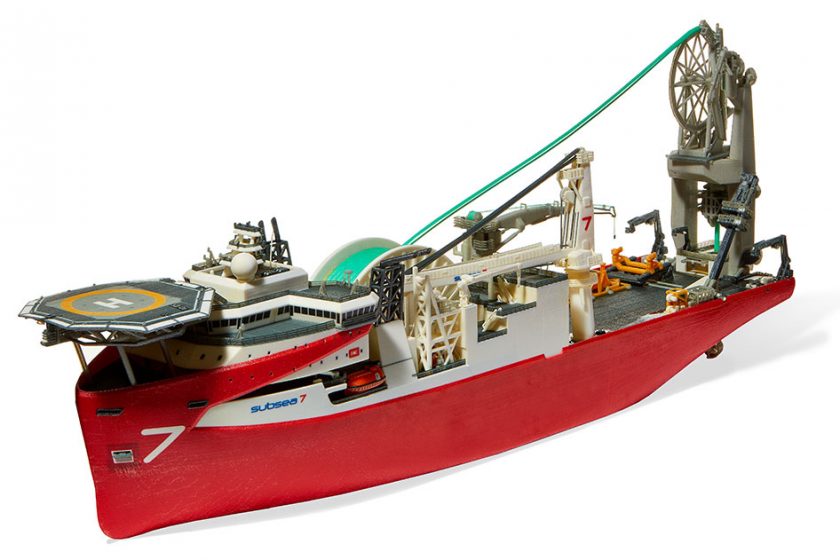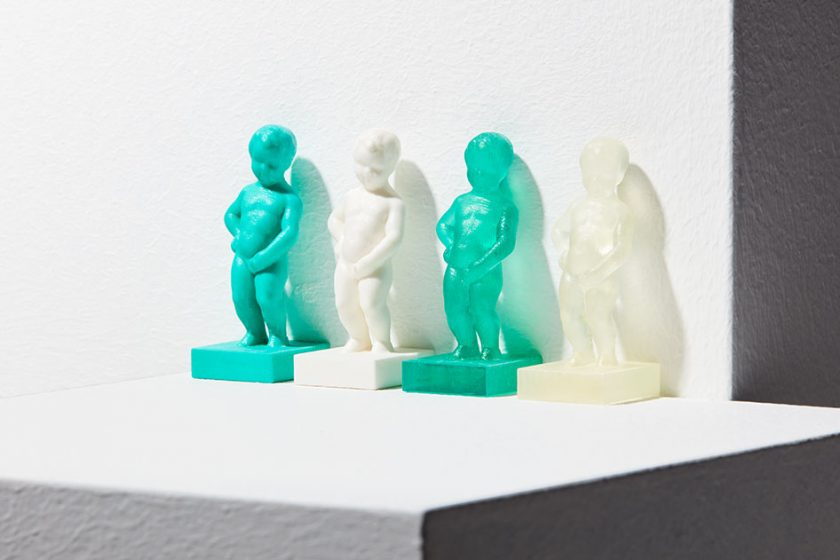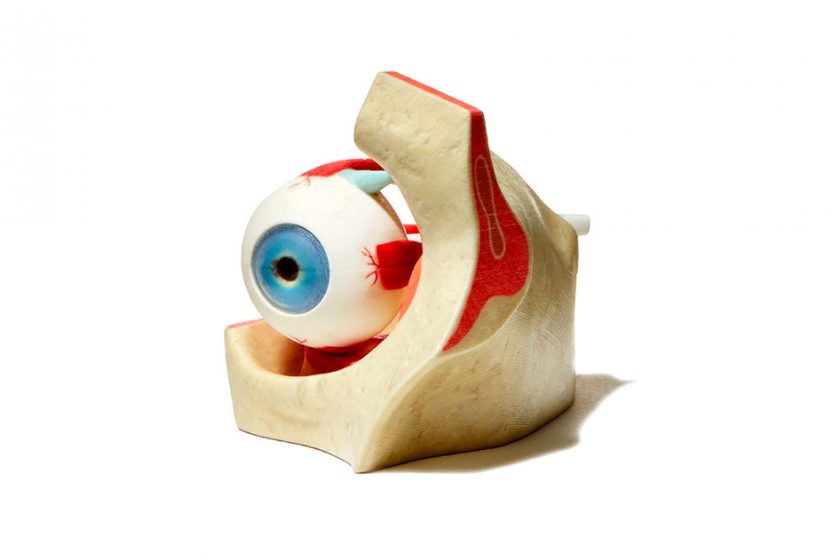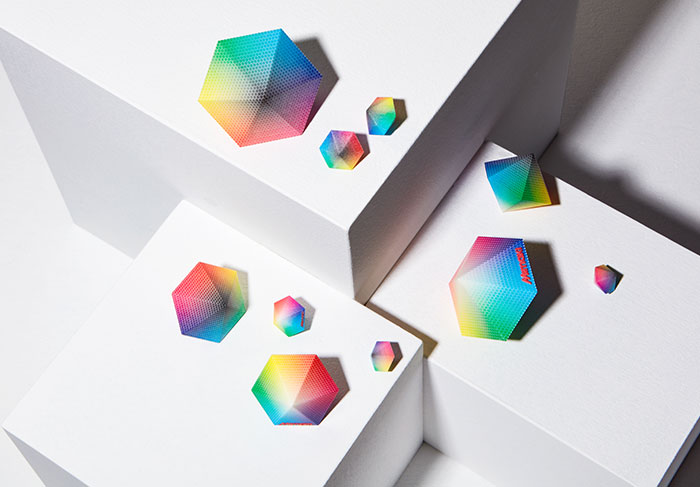
Die Anzahl der Anwendungen für 3D-Drucker wächst ständig. Aus diesem Grund wird viel von innovativen Projekten in der Luft- und Raumfahrttechnik, im Fertigungssektor und in der Medizin gesprochen. Ebenso spannend ist die Entwicklung des 3D-Vollfarb-Inkjetdrucks, der 3D-Objekte in nicht weniger als 10 Millionen Farben ausgeben kann. Dadurch ist es möglich, die Produktionszyklen deutlich zu verkürzen und den Marktauftritt zu beschleunigen. Es entsteht ein Produkt, das sofort einsatzbereit ist.
Geschrieben von: Bert Benckhuysen, Senior Produktmanager Mimaki Europe
Viel hat sich geändert, seit 1968 der erste elektronische Drucker entwickelt wurde. Innerhalb von wenigen Jahrzehnten kamen zuerst Schwarzweiß-Matrixdrucker, dann Vollfarb-Inkjet- und Laserdrucker. Ein ähnlicher Fortschritt zeichnet sich gegenwärtig auf dem Markt für 3D-Drucker ab. Nur scheint es, als ob die Entwicklung dieses Mal noch um ein Vielfaches schneller ablaufen könnte. Das größte 3D-Druckvolumen fällt immer noch bei Prototypen und beim Print-on-Demand an. Bis vor kurzem war noch ein großer Aufwand erforderlich, um aus einem 3D-gedruckten Objekt ein fertiges Produkt zu machen. Denken Sie nur an das mühsame Ausschneiden der Stützstrukturen, das Schleifen, Polieren und nachträgliche Übermalen. Mit der Inkjettechnik des 3D-Druckers von Mimaki lassen sich alle diese Arbeiten teilweise oder völlig vermeiden. So ist es möglich, Objekte mit UV-härtender Tinte direkt in 10 Millionen Farben auszugeben. Zudem löst sich das Stützmaterial einfach auf, wenn man das Objekt in lauwarmes Wasser taucht. Damit beschleunigt sich der gesamte Ablauf deutlich und der Arbeitsaufwand verringert sich, da der Drucker das 3D-Objekt in Vollfarbe zur Verfügung stellt und es nahezu sofort einsetzbar ist.
Vollfarbdruck von 3D-Objekten
Der 3D-Vollfarbdrucker 3DUJ-553 von Mimaki ist dank der UV-LED-Inkjet-Technologie ein bahnbrechendes Produkt. Das Material ist so hart wie ABS, das heißt, es eignet sich für eine Vielzahl an Anwendungen. Und wie bei herkömmlichen Inkjetdruckern können die Objekte in mehr als 10 Millionen Farben ausgegeben werden. Für den Laien, der mit dem 3D-Druck nicht vertraut ist, mag das nichts Besonderes sein. Doch dieses Leistungsmerkmal ist außergewöhnlich. Tatsächlich gibt es viele 3D-Drucker auf dem Markt. Diese unterscheiden sich jedoch meistens nur in der Druckauflösung und den verarbeitbaren Materialien. Der 3D-Vollfarbdruck, zu dessen Entwicklung auch Mimaki beigetragen hat, ist erst vor etwa 10 Jahren auf den Markt gekommen. Das war ein bedeutender Schritt, um diese Technologie einem größeren Interessentenkreis zur Verfügung zu stellen und sie für ein breiteres Anwendungsspektrum nutzbar zu machen. Schließlich ist es nun möglich, ein Objekt komplett in 3D und in Farbe zu erstellen und es im Originalformat auf einem 3D-Vollfarbdrucker zu reproduzieren. Diese Entwicklung hat dazu geführt, dass der 3D-Druck auf einen Schlag fast den gleichen Status wie der 2D-Druck erreicht hat, nur dass er eben dreidimensionale Objekte ausgibt. Der Entwurf wird einfach am Computer erstellt und dann mühelos ausgedruckt, ohne dass man sich Gedanken um aufwändige Verarbeitungsschritte, wie die nachträgliche farbliche Gestaltung oder das Entfernen von Stützmaterial, machen muss.
3D-Kunst und maßstabsgetreue Modelle auf Anforderung
Der 3D-Vollfarbdruck erobert den Markt derzeit in schnellen Schritten. Er verkürzt nicht nur die Zeit bis zum Marktauftritt des Produktes, sondern gibt auch besser aussehende und höherwertige Objekte als ein 3D-Standarddrucker aus. Jetzt ist diese Technologie für mehr Unternehmen nutzbar, um beispielsweise Vollfarb-Prototypen neuer Produkte anzufertigen. Nun sind sie in der Lage, ohne zusätzlichen Arbeitsaufwand ein fertiges und optisch ansprechendes Modell vorzustellen. In der Praxis wird der 3D-Vollfarbdruck auch oft genutzt, um maßstabsgetreue Modelle, die eine Vielzahl einzelner Elemente enthalten, zu erstellen. Dazu zählen die großen Kabinen von Kreuzfahrtschiffen, Yachten oder Offshore-Anlagen. Bisher wurden dafür Modellbauspezialisten benötigt, die diese Objekte mit großem Arbeitsaufwand erstellten. Heute ist das schneller und mit deutlich geringeren Kosten möglich.
Für die Verbraucher wird der 3D-Vollfarbdruck ebenfalls immer interessanter. Mehr und mehr 3D-Scans bzw. 3D-Daten werden online zur Verfügung gestellt oder verkauft und können auch einfach als 3D-Druck bestellt werden. Damit sind Künstler in der Lage, ihre virtuellen Kreationen online anzubieten und auf Anforderung zu drucken. Die Objekte reichen von 3D-Gemälden jeder Art bis zu komplexen Skulpturen und Figuren. Sammler und Modellbauer nutzen den 3D-Druck bei der Suche nach alternativen Möglichkeiten, um ein Unikat oder seltenes Objekt zu bekommen.
Auch Ersatzteile, Gehäuse oder Elektronikabdeckungen werden heute bereits in allen Formen und Abmessungen auf Anforderung angeboten. Der 3D-Vollfarbdruck erlaubt, die verwendeten 3D-Modelle umfassend anzupassen und zu personalisieren, ohne auf die Beschränkungen der Serienproduktion Rücksicht nehmen zu müssen. Das eröffnet Unternehmen, die auf ihrer kleinen 3D-Druckanlage verbraucherfreundliche Anwendungen produzieren, einen riesigen Markt.
Unbestritten ist der Vollfarbdruck eine wegweisende Entwicklung in der 3D-Branche. Er wird dem Markt in den kommenden Jahren einen großen Aufschwung verleihen.
